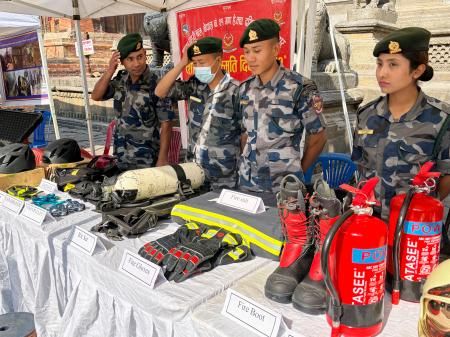Rebuilding Nepal: Post-Earthquake Recovery – A Decade of Progress and Persistent Challenges
The devastating 2015 Nepal earthquakes, measuring 7.8 and 7.3 on the Richter scale, left an indelible mark on the nation. More than 8,700 lives were lost, and millions were left homeless. A decade later, the path to recovery remains a complex journey marked by both significant progress and persistent challenges. This article explores the rebuilding efforts, highlighting successes, ongoing obstacles, and the future of Nepal's reconstruction.
The Immediate Aftermath and Initial Response
The immediate aftermath of the earthquakes saw a massive international aid response. Countries and organizations around the globe contributed billions of dollars to relief efforts, focusing on:
- Emergency Shelter: Providing temporary housing for displaced families.
- Search and Rescue: Locating and rescuing survivors trapped under rubble.
- Medical Aid: Treating injuries and preventing disease outbreaks.
However, the sheer scale of destruction, coupled with Nepal's challenging terrain and limited infrastructure, hampered the initial response. The distribution of aid faced significant logistical hurdles, leading to delays and inequities in assistance.
Reconstruction Efforts: A Decade of Progress
Despite the initial setbacks, Nepal has made considerable strides in rebuilding:
Housing Reconstruction
- Government Initiatives: The Nepal government launched ambitious housing reconstruction programs, providing financial assistance to affected homeowners. However, bureaucratic delays and corruption hindered the effectiveness of these programs.
- Community Participation: Local communities played a crucial role in the rebuilding process, leveraging traditional building techniques and incorporating earthquake-resistant designs.
- Progress and Challenges: While significant progress has been made in rebuilding homes, many families still live in temporary shelters or substandard housing. Access to funding and building materials remains a major challenge in remote areas.
Infrastructure Development
- Road Network Repair: The earthquakes severely damaged Nepal's road network, impacting access to essential services and hindering economic activity. Significant progress has been made in repairing roads, although some remote areas still lack adequate connectivity.
- School and Hospital Reconstruction: Many schools and hospitals were destroyed or severely damaged. The reconstruction of these vital facilities is ongoing, with a focus on incorporating earthquake-resistant designs.
- Heritage Site Restoration: Nepal's rich cultural heritage suffered significant damage. The restoration of iconic sites like Kathmandu Durbar Square remains a complex and painstaking process, requiring specialized expertise and funding.
Ongoing Challenges and Future Outlook
Despite the progress, several significant challenges persist:
- Funding Gaps: While substantial international aid was provided, funding gaps remain, hindering the completion of many reconstruction projects.
- Corruption and Transparency: Concerns about corruption and lack of transparency in the allocation and use of funds continue to plague the reconstruction efforts.
- Economic Recovery: The earthquakes severely impacted Nepal's economy, resulting in job losses and decreased tourism. Economic recovery remains a long-term challenge.
- Climate Change Vulnerability: Nepal is highly vulnerable to the impacts of climate change, including increased frequency and intensity of natural disasters. Future reconstruction efforts must incorporate climate change resilience.
Looking Ahead: Building a Resilient Nepal
Rebuilding Nepal requires a long-term commitment to sustainable development. This includes:
- Strengthening Governance: Improving governance structures and promoting transparency and accountability are crucial for ensuring the effective use of resources.
- Investing in Disaster Resilience: Implementing comprehensive disaster risk reduction strategies is vital to protect Nepal from future earthquakes and other natural disasters.
- Promoting Sustainable Economic Growth: Creating opportunities for sustainable economic growth will help ensure long-term prosperity and resilience.
- Community Engagement: Continued engagement and empowerment of local communities are essential for successful and equitable reconstruction.
The journey towards rebuilding Nepal is far from over. However, the progress made in the past decade demonstrates the resilience and determination of the Nepali people. With continued international support, transparent governance, and a commitment to sustainable development, Nepal can build a brighter and more resilient future.
Keywords: Nepal earthquake, Nepal reconstruction, post-earthquake recovery, Nepal rebuilding, earthquake relief, disaster recovery, Nepal aid, sustainable development, Nepal infrastructure, heritage restoration, Nepal housing, earthquake resilience.
